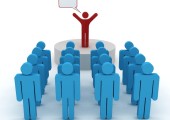There are many forms of sponsorship businesses can use to their advantage: from the check written to the local Little League baseball team to help offset the cost of uniforms (with your name on the back), to local sponsorship of a national charity event, to owning a major golf tournament or NASCAR race. Each has its own audience, it’s own impact, and it’s own way of engaging the audience. The trick with all of them is to create a positive, lasting and active emotional connection between your brand and the event.
Brand activation for a sponsorship is one of the toughest marketing challenges most businesses face in their effort to raise awareness and drive recognition that can boost sales over time. The magic is in the matchup of the brand and the sponsored entity. The audience has to intuitively “get it” when they see the sponsor’s name in connection with the event, which means that there needs to be at least some rudimentary logic to the pairing of the two. There are some pairings that appear to be, well, natural in how they are executed, but I’m a firm believer in the tenet that there are no coincidences, and that most simple, natural occurrences are engineered by someone or something, although not necessarily for their own purposes. Auto racing promotions by oil companies, tire companies, engine builders and the like seem like natural extensions. Beer, cigarettes, soft drinks, and other consumer consumables, seem like a bigger stretch, until you consider that the audience for the race is the tightest demographic match to their product buyer possible, based on their own internal research. A huge chunk of race fans enjoy a Coke regularly, and in earlier times, the vast majority of race fans enjoyed a Winston or Marlboro on a very regular basis.
Even those famous pairings required some time and effort to appear natural, and be linked in people’s minds permanently. Not only were there competitors in each category to wrench the spotlight from, but they had to find a way to activate the sponsorship so that all the dollars they spent paid off, by moving the product sales needle in some predictable way. Pennzoil, Valvoline, Quaker State, MobileONE, and a host of other petroleum brands vied for NASCAR sponsorships, but only one would eventually rise to the top of the recognition heap in that particular type of racing. The winning brand crafted a long-term series of ads, promotions and other outreach content that pinpointed and brought to light their involvement with high performance activities. You could put it in your Chevy, but you knew that it was developed for and was used in a race car, making your grocery-getter a little more like the race car you couldn’t have. Aspirational activation is a strong driver of success in sponsorships, and has been used to promote luxury brands and commodity consumables alike for many years with great success.
Athletic endeavor has been fertile ground for this type of approach, because athletes have long been role models of persistence, hard work, grit and perseverance against the odds. Aspirational stories abound about athletes, and since they enjoy extensive media coverage, athletes and their stories are readily available to the public. If consumers aspire to be like the great athletes they watch and read about, then emulating them is a logical step toward making that aspiration a reality. If Tiger Woods wears a Tag Heuer watch, maybe if I buy one I’ll be a little more like him, run in the same company as he does. The athletes’ brand transfers to the product, and in some cases the reverse as well, creating that “natural” pairing. You’d expect the winner of a slew of majors in half that many years, with lifetime earnings in the multi-millions, to wear a pretty high-end watch. If Tiger had a Timex endorsement, it would have created a bit of a disconnect for the audience(s), and that natural feeling would not exist, diminishing the positive effect of both brands, diluting the aspiration, and reducing the effect on sales to the point of being nonexistent.
On a smaller scale, middle market businesses can make sponsorships pay off quite well if they create or find a way to activate that sponsorship emotionally with the audience. The key is still to make it aspirational and activational. The aspiration can often come from the sponsor’s own position in the market. The largest commercial bank in the state sponsoring a business organization designed to build wealth and commercial connections makes perfect sense. Offering unique access or benefits to the members of that group makes it activated and effective. Market awareness, brand recognition don’t do all that much unless the target audience frequently finds itself in a quandary between two entities – the one with the higher recognition has been shown to win more frequently and more consistently, however irrational that choice may be for the consumer.
Being in front of the right target audience for extended periods of time offers the recognition, but with no activation or aspiration, the sponsorship will be less than ideally effective. A male country music artist’s tour sponsored by Prius doesn’t have the same level of activation and almost no aspiration, when compared to Ford trucks. It’s a matter of cultural understanding, and matching the market leader to the aspirations of the audience. Country music fans clearly care about their environment as much as the next fan, but their concern takes a different form than saving gas or reducing pollution.
Big brands should select their sponsorship opportunities carefully, to be sure that the target audience’s aspirations and activations align with their values and cultural norms. Done correctly, your sponsorship can be one of those “natural” pairings that lives in consumer’s minds for a lifetime.




